Gardening is an invigorating and rewarding experience—it’s no wonder why it continues to be a favorite pastime of many. When expanding your garden, tomato varieties deserve special consideration because you have the opportunity to add new color, flavor, and texture to recipes. Among the more popular types are Cherokee Purple tomatoes and Black Krim tomatoes—but what exactly sets these two apart?
Today we’ll explore their unique features for different growing spaces as well as key differences between the species themselves. By learning about each type you’ll also learn some useful tips on how best to care for these delicious vegetables from seedling through ripening!
What are Tomatoes and What Conditions Do They Need to Grow?
Tomatoes are a warm-season crop and can be grown in a variety of soils. They need an average temperature of about 70°F (21°C) to reach their full fruiting potential, although they can tolerate temperatures as low as 50°F (10°C). Tomatoes require at least 8 hours of direct sunlight each day, though more is always better. Additionally, tomatoes do best when provided with plenty of water and fertilizer throughout the growing season. Mulching around the plants helps to retain moisture and keep weeds down. Tomatoes also benefit from staking or caging so that they remain upright and fruits can be easily picked. Pruning off any diseased leaves or stems helps to promote healthy growth in tomatoes. With the right conditions, tomatoes can be harvested between 60-100 days after planting. [1]
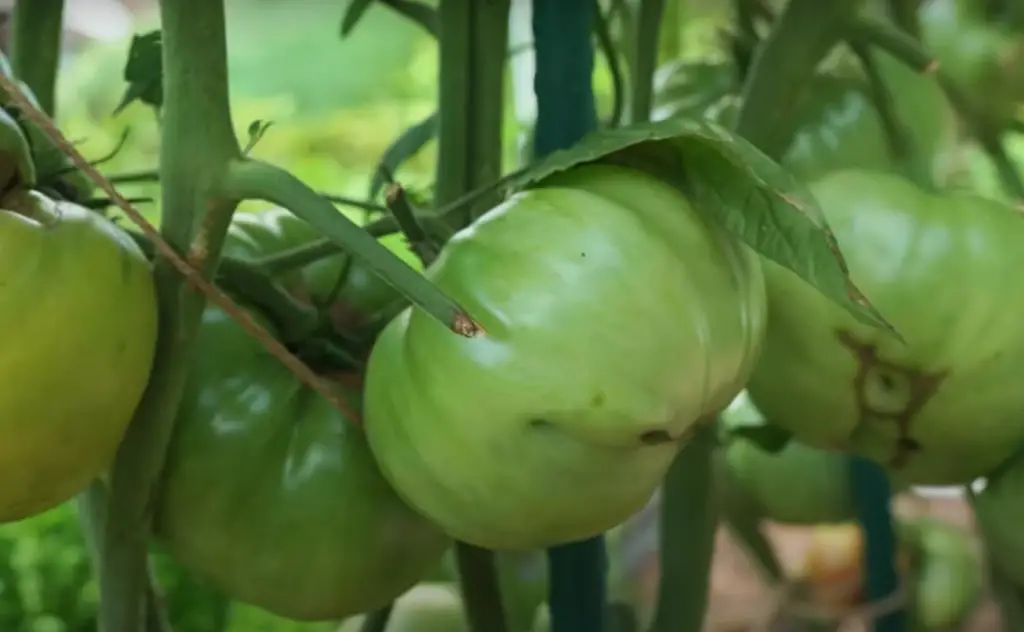
The fruit of a tomato plant varies in size and shape, ranging from small cherries, to large beefsteak tomatoes. Tomatoes come in many colors including red, orange, yellow, purple and green. No matter what type or color of tomato you choose to grow, it is important to provide them with the proper care throughout their growing season for a bountiful harvest. [2]
What Kind of Tomatoes Are Available?
Tomatoes come in many different varieties, shapes, sizes, and colors. The most common types of tomatoes are beefsteak, cherry, heirloom, Roma, and plum. Beefsteak tomatoes are large and meaty with a mild flavor. Cherry tomatoes are small and sweet. Heirloom tomatoes have unique flavors that vary depending on the variety. Roma tomatoes are oblong in shape with a thick flesh and low moisture content making them ideal for canning or sauces. Plum tomatoes have an intense flavor with a dense texture perfect for pastas or pizza sauces. There are also specialty varieties such as yellow pear or orange blush tomatoes that bring unique color to dishes. Whichever type you choose is up to your taste preference.
In growing each variety of tomato has their own unique set of requirements such as sunlight, water, and soil. Knowing the needs of your variety before planting is essential for a healthy harvest. Additionally, it is important to select disease-resistant varieties so that you can enjoy successful harvests year after year. With proper care and attention you can experience the joys of growing delicious tomatoes in your own backyard. [3]
What Are The Characteristics Of Black Krim?
Black Krim tomatoes are an heirloom variety of tomato. They have a rich and robust flavor and can be eaten fresh or cooked. The plants produce large, dark purplish-brown fruits with red flesh inside. The fruit has a slightly salty taste, which is often compared to beefsteak varieties. They are perfect for salads, sandwiches, sauces, and other cooked dishes.
Black Krim tomatoes have a thick skin that is slightly sweet and acidic at the same time. The flesh of these tomatoes is meaty with few seeds and lots of juice when ripe. It also has good holding qualities after it’s been harvested so it won’t fall apart easily when sliced. The color of the fruit ranges from dark brown to black and can take on different shades of red when fully ripe. Its texture is slightly firm and juicy, making it an ideal choice for slicing, grilling, roasting, and stewing. The taste of this tomato variety is usually described as a mix between beefsteak and cherry tomatoes. It has a unique flavor that adds depth and complexity to dishes.
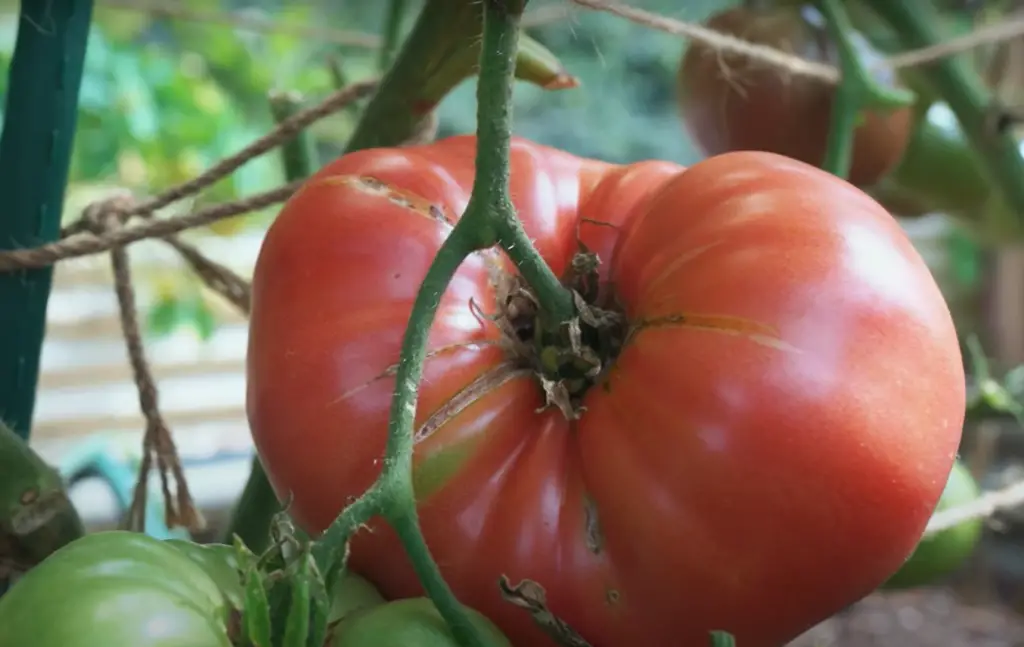
Black Krim tomatoes are also known for their high disease resistance and are relatively adaptable to various climates. They can be grown both in outdoor gardens or in containers indoors with proper care. They have an indeterminate growth habit meaning they will continue to produce fruits until the season ends. This makes them a great choice for gardeners who want to maximize their harvests. [4]
Overall, Black Krim tomatoes offer gardeners a unique and flavorful addition to their gardens. With their robust flavor and high disease resistance, they are sure to be an excellent choice for any garden or kitchen.
How To Grow Black Krim?
Black Krim tomatoes are a popular heirloom variety known for their deep purple-black skin and sweet, complex flavor. Growing Black Krim tomatoes can be easy if you know what to look for in terms of soil, sunlight, and water. Here’s how:
- Choose the Right Location: Select a sunny spot that receives at least 6 hours of direct sunlight per day. The area should also have well-draining soil with plenty of organic matter incorporated into it.
- Plant the Seeds or Transplants: If sowing seeds directly into the ground, plant them 1/4 inch deep and about 3 inches apart in rows that are spaced 2 feet apart. If planting transplants, dig a hole deep enough to cover the stem up to its first set of leaves.
- Fertilize and Water: Tomatoes need plenty of nitrogen-rich fertilizer, so feed your plants every few weeks with a balanced fertilizer or compost tea. Water regularly throughout the season but be sure not to overwater as this can cause fruit splitting.
- Stake and Support: As Black Krims grow, they will require support such as cages or stakes in order to keep them upright and prevent their branches from breaking under the weight of the fruits.
- Harvesting: Ripe Black Krim tomatoes should be firm and have an even black color all over. Cut them gently off the vine with pruning shears. Enjoy your delicious, homegrown tomatoes! [5]
Can Black Krim be Fertilized?
Black Krim tomatoes can be fertilized.
It means 10% nitrogen, 10% phosphorus and 10% potassium. Fertilize your Black Krim plants every two weeks during the growing season with a tablespoon of fertilizer for each plant. It’s best to mix the fertilizer into the soil around the base of each plant, rather than sprinkle it directly on top of leaves or stems. Water thoroughly after fertilizing to help nutrients reach the roots. Be sure not to over-fertilize as this can burn and kill your plants. For additional feeding, you can use a fish emulsion or compost tea once every month or two as well. If you have acidic soil (lower pH), use an appropriate fertilizer that is formulated for acid loving vegetables such as tomatoes.
This will provide your plants with the necessary nutrients for optimal growth and production of delicious fruits. Additionally, adding a layer of organic mulch around the base of the plants can help retain moisture and keep weeds at bay. With proper care and attention, Black Krim tomatoes can make an excellent addition to any garden. [6]
What Are The Characteristics Of Cherokee Purple Tomato?
The Cherokee Purple tomato is an heirloom variety that has been around for over 100 years. It is characterized by its deep purplish-red color, sweet flavor, and firm texture. Its size can vary depending on the growing conditions, but it typically ranges from 2-4 inches in diameter. The flesh of this tomato is usually juicy and contains a complex mix of flavors ranging from smoky to sweet.
While not as widely available as other varieties of tomatoes, the Cherokee Purple tomato remains a popular choice amongst gardeners due to its unique taste and appearance. In addition to its distinct features, this tomato also has a high level of antioxidants which can help improve overall health. When grown in optimal conditions, they are quite prolific producers of fruit. This makes them a great choice for those looking to get an abundant harvest from their garden. Whether eaten fresh or cooked, the Cherokee Purple tomato is sure to provide a delicious addition to any recipe. [7]
Some additional characteristics of this variety include:
- High sugar content (3-7%).
- High acidity (4.1-5.6 pH).
- Firm texture which helps it hold its shape when cooked.
- Moderate yielder, producing up to 25 tomatoes per plant depending on conditions.
- Susceptible to common tomato diseases like blight and early blight.
- Matures in 75 – 85 days after transplanting, making it a bit slower than other varieties of tomatoes.
- Plant grows up to 6 feet tall and needs support from a stake or trellis.
- Color fades with exposure to direct sunlight, so avoid planting in the hottest parts of the day.
- Distinctive smoky flavor that has been described as having notes of chocolate or even beefsteak.
- Excellent for salads, sauces, canning, and freezing.
- Extremely popular among home gardeners due to its unique appearance and flavor profile. [8]
Overall, the Cherokee Purple tomato is an excellent choice for anyone looking to add some color and flavor variety to their garden. Its high sugar content makes it ideal for preserving while its complex flavors make it great for cooking into sauces and other dishes. With its easy to grow nature and moderate yield, this tomato is sure to provide an abundance of delicious tomatoes for years to come. Try planting some Cherokee Purple tomatoes today in your garden and enjoy the unique flavor that only this heirloom variety can provide!
How To Grow Cherokee Purple Tomato?
Growing Cherokee Purple tomatoes is a rewarding experience that brings delicious and flavorful fruit. To get the most out of your tomato plants, it’s important to provide them with plenty of nutrients and sunlight. Here are some tips for growing Cherokee Purple tomatoes:
- Plant in Full Sun: When planting your Cherokee Purple tomatoes, make sure they receive at least 8 hours of direct sunlight per day. This will help ensure they grow healthy and vibrant fruits.
- Fertilize Regularly: Tomatoes require all essential nutrients for proper growth and development, so fertilizing regularly is key to success. Use a balanced fertilizer formulated specifically for tomatoes to keep your plants healthy and strong throughout the season.
- Water Regularly: Cherokee Purple tomatoes require at least an inch of water per week, so it’s important to provide regular watering. If you see the leaves starting to droop or wilt, it usually means your plants are in need of more water.
- Support Your Vines: Cherokee Purple tomatoes are indeterminate vines that should be supported with stakes or cages to keep them upright and encourage strong root development. This will help prevent damage from wind and heavy fruits.
- Prune Excess Growth: To ensure big, healthy fruits, it’s important to prune away any excess foliage and suckers throughout the season. Removing excess growth will improve air flow around the plant and discourage fungal disease issues. [9]
Can Cherokee Purple Tomato be fertilized?
Cherokee Purple Tomato should be fertilized to keep it healthy and produce the best tasting tomatoes. It is recommended to use a balanced fertilizer such as 10-10-10 or 5-10-5 before planting and then once every two weeks while the plants are actively growing. Avoid over-fertilizing as this can lead to poor fruit quality and low yields. Additionally, adding some extra organic matter such as composted manure or aged animal manure prior to planting can also help improve fertility in soil lacking in nutrients.
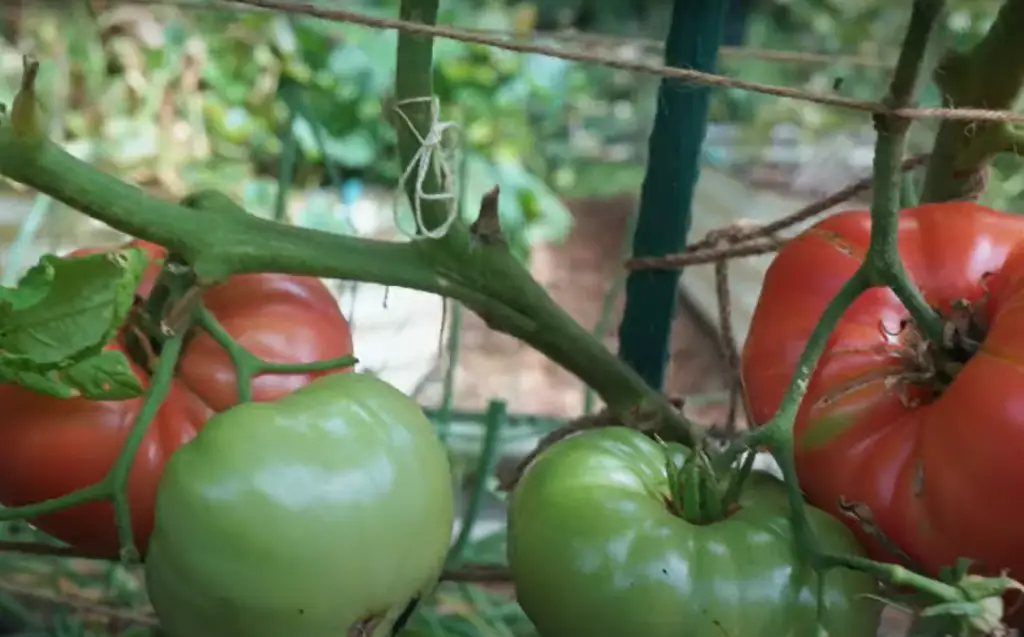
Lastly, mulching with straw or grass clippings around the base of each plant will help retain moisture and suppress weeds that compete for valuable resources like water, sunlight, and nutrients. With proper care and attention, your Cherokee Purple Tomato plants will produce delicious and flavorful tomatoes. [10]
Which Is Better In Growing: Cherokee Purple or Black Krim?
Cherokee Purple tomatoes are known for being sweet, succulent and packed with flavor. The deep purplish-red fruit of this variety can range from 8 to 12 ounces in size. It is a heirloom tomato that has been enjoyed for many generations due to its unique taste and texture. It is best harvested when the entire tomato is colored darker than the typical red hues seen in other varieties.
They have an intense, smoky flavor and are generally considered sweeter than most other tomatoes. Black Krims can get up to 8 ounces in size.Both Cherokee Purple and Black Krim tomatoes are great for growing in a home garden. Both varieties produce an abundance of fruit during the summer months and are relatively easy to care for as long as they get plenty of sun, water, and fertilizer. Overall, both are delicious and hearty plants that can provide you with plenty of homegrown tomatoes throughout the season! [11]
FAQs
What type of tomato is a Black Krim?
A Black Krim tomato is an heirloom variety of the species Lycopersicon esculentum. It is a beefsteak-type, indeterminate variety and has deep purple-red skin with green shoulders and red flesh inside. They are slow to crack or split so they hold up well when harvested at full maturity or slightly underripe.

As with most varieties of tomatoes, Black Krim should be harvested when ripe from the vine for peak flavor. They do best in warm, sunny climates and need a long season to fully ripen. Black Krim tomatoes are not resistant to certain plant diseases such as early blight. However, they can be grown organically with careful monitoring and preventative measures.
Regular pruning of foliage will also help promote healthy growth and fruiting.What is the tastiest black tomato?
Some people might say the Black Krim tomato is the tastiest black tomato, while others may prefer something like a Brandywine or Cherokee Purple. Ultimately, it depends on each individual’s personal taste preferences. The important thing is to find what works best for you and your garden! Try planting several varieties of black tomatoes and let your taste buds decide which one is the most delicious. Enjoy experimenting with different flavors and textures that these unique plants can bring to your cooking!
What is the best purple tomato?
The best purple tomato is the Indigo Rose variety. This indigo-purple colored heirloom variety was developed by Oregon State University and a group of dedicated gardeners in the United States. The tomatoes are packed with antioxidants, have an intense sweet taste, and are characterized by their deep, dark color. They also tend to be huge – often more than 8 ounces each! For those looking for something truly unique and special in their garden or on their plate, the Indigo Rose is the way to go. In addition to its striking appearance and flavor, this variety requires no genetic modification or engineering making it a great choice for organic gardening enthusiasts.
What is the best way to store fresh tomatoes?
The best way to store fresh tomatoes is to keep them at room temperature and out of direct sunlight. Tomatoes should not be refrigerated, as this can diminish their flavor and texture. It’s also important to keep them away from ethylene-producing fruits such as apples, pears, and bananas to prevent over-ripening. If you need to store tomatoes for a longer period of time, wrap them individually in newspaper or paper towels and place in a single layer on a shallow tray lined with parchment paper.
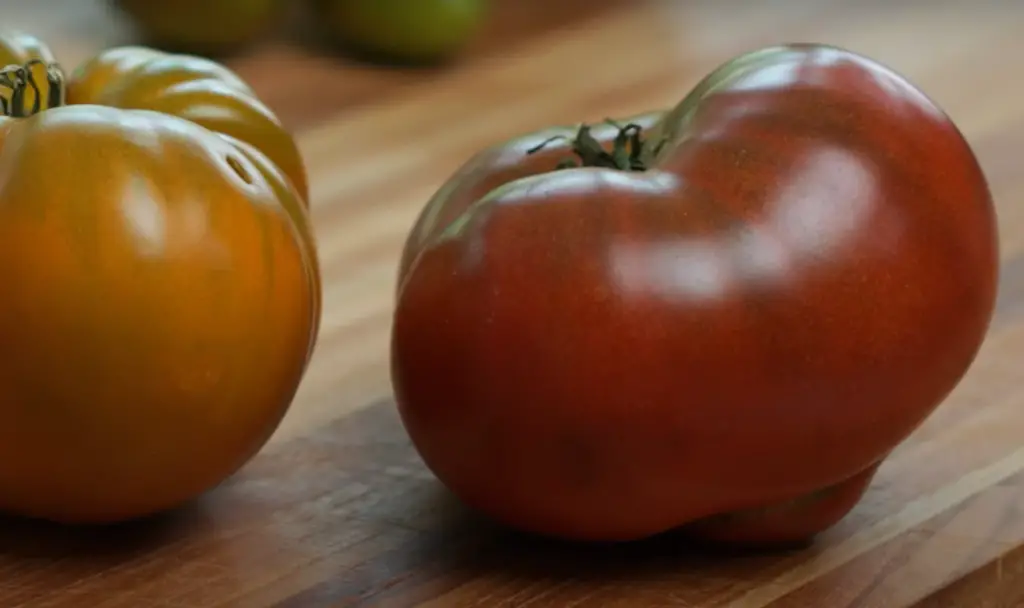
Then cover the tray loosely with plastic wrap and store in the refrigerator for up to two weeks. For ultimate freshness, use your tomatoes as soon as possible after harvesting! Keep in mind that some varieties of tomatoes may not have a very long shelf life, so be sure to enjoy them while they are at their peak!
Useful Video: CHEROKEE PURPLE 5 REASONS
Final Words
You don’t have to be a master gardener to grow and appreciate these unique and flavorful tomatoes. Whether you’re a beginner looking to try your hand at sun-ripened garden goodness, or an avid grower who chases the perfect yield, Cherokee Purple and Black Krim Tomatoes offer something special. Best eaten fresh off the vine when they’re tart and sweet, the Cherokee Purple and Black Krim tomato also make for great pickled produce that can stay good in storage as long as it is done properly. Above all else, there truly is nothing better than harvesting your own tomatoes from the garden in any shape or form! Happy growing!
References:
- https://extension.unh.edu/resource/growing-vegetables-tomatoes-fact-sheet-1
- https://www.rhs.org.uk/vegetables/tomatoes/grow-your-own
- https://www.thepioneerwoman.com/food-cooking/cooking-tips-tutorials/g40517177/types-of-tomatoes/
- https://plantura.garden/uk/vegetables/tomato-varieties/black-krim-tomato
- https://www.gardeningknowhow.com/edible/vegetables/tomato/black-krim-tomato-care.htm
- https://www.thespruce.com/black-krim-tomato-care-guide-6836377
- https://plantura.garden/uk/vegetables/tomato-varieties/cherokee-purple-tomato
- https://minnetonkaorchards.com/cherokee-purple-tomato/
- https://gardenerspath.com/plants/vegetables/grow-cherokee-purple-tomato/
- https://www.thespruce.com/cherokee-purple-tomato-growing-guide-5323792
- https://www.bountifulgardener.com/cherokee-purple-vs-black-krim-tomatoes/









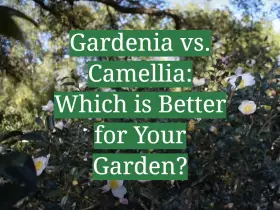
Leave a Reply
View Comments